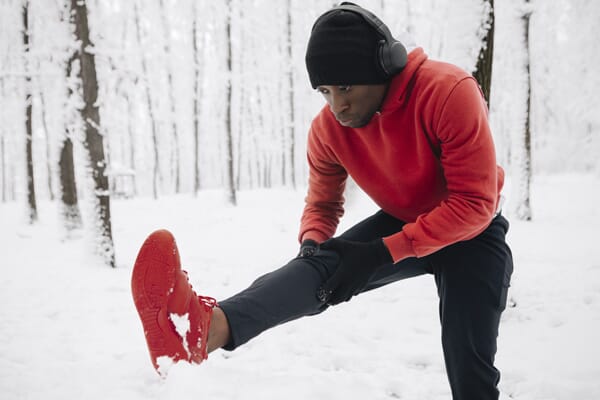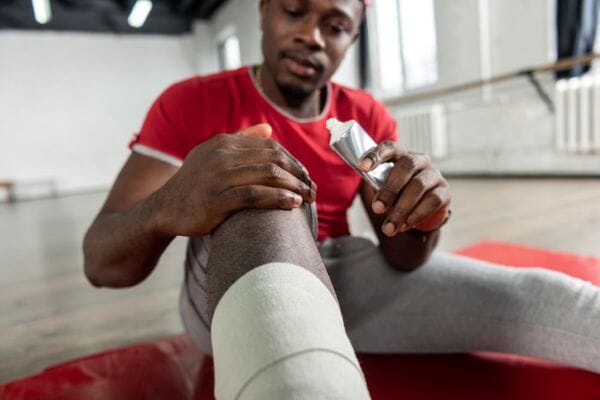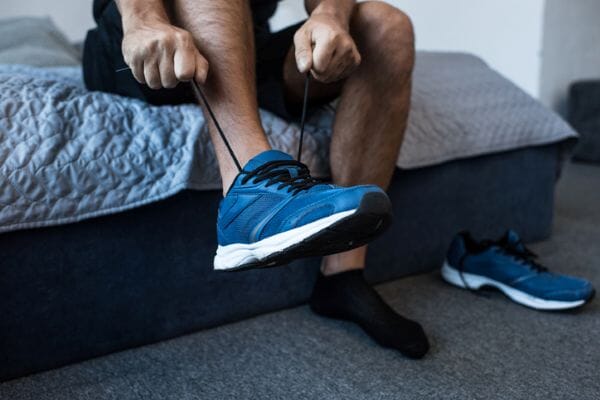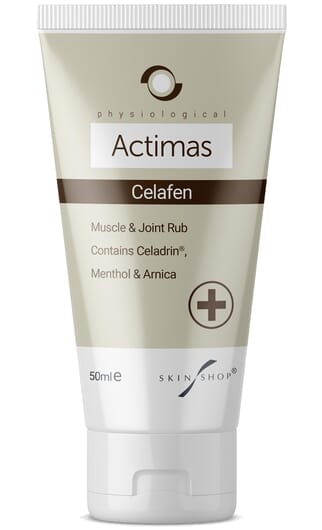With the nights starting to draw in and time and weather for outdoor fitness becoming more problematic, many people turn to running as an efficient way to maintain winter fitness, get some much needed fresh air and it’s an activity which can be done in most weathers and also when its dark.
However, even experienced runners can be vulnerable to running-related pain and injury, but beginners or less consistent runners are even more at risk.
Studies show (1) that approximately 50% of running injuries are reoccurring, meaning if you have a former injury either from running or something else, your risk of future injury from running is higher.

Most running injuries affect the lower body, primarily the knees, followed by shins, Achilles tendon and foot injuries, but it can also the lower back. Inflammation from overuse and RSI (repetitive strain injury) are the most commons causes of running pain.
First signs of common running pain that could lead to injury are;
- Tightness in the Achilles tendon when you are walking but that can also continue to ache when you rest. This is commonly known as shin splints.
- A dull aching pain in one or both of your hip joints
- Pain and tenderness in the outer part of the knee joint, knows as runner’s knee.
- Swelling, fluid and pain on one or both of the ankle joints.
- Tension and pain in the lower back
- A consistent pain when walking, which is sometimes sharper when more weight is put on it, on the bottom of the foot or heel. This is known as plantar fasciitis.
If you experience any of these types of running pain you should stop running and begin an injury recovery procedure as soon as possible;
- Apply ice or a cold compress to the affected area and if you can raise the affected area to above heart level as much as you can while icing it.
- Compression on the affected area can also help reduce inflammation and so speed up recovery. Use a compression sock or compression band om the area if possible.
But the best way to try and avoid running pain is to take a preventative strategy when starting a regular running routine.

Here’s 6 rules to help reduce the risk of running pain;
1. Use a topical anti-inflammatory as a post-run therapy for painful niggles
Although you may to have developed an actual injury, many runners experience small niggles when running regularly. They are not enough to stop you running but they should not be ignored.
The main thing with niggles is to treat them early by reducing inflammation and improving flexibility of the affected area.

A good combination for this is to immediately stretch the affected area after running and then post-shower apply a topical natural pain relief and anti-inflammatory therapy to bring down any niggling inflammation and prevent stiffness before your next run.

Try Actimas Celafen which contains a patented long chain fatty acid complex called celadrin which has been found in research (2) to help reduce pain and stiffness in muscles and joints within 30 minutes of application.
2. Never run when you are tired or feeling under the weather
If you’re feeling tired or run down or a bit unwell, avoid running. Running is quite demanding on the body so if you are about to go down with an illness or are tired on run down you are likely to make the illness worse and also increase your risk of muscle or tendon damage.
3. Invest in running insoles and wear them daily
Insoles specifically for running can be bought and inserted into your normal running trainers. It’s a good idea to regularly replace your running in soles to make sure they are giving you the maximum support.

If you are running quite intensively it can help to insert these insoles into your normal daily shoes too if you are doing a lot of walking about during the day. This is an excellent way to help prevent potential running pain and injury as they are essentially a protective tool.
4. Don’t increase the length and intensity of your running by more than 10% a week
A gradual approach to increasing the length and intensity of your run, is the best way to avoid running pain and injury. Experts suggest (3) that no more than a 10% weekly increase is the best guide to increasing your run to avoid injury.

5. Invest in a foam roller
Foam rolling helps to relax tight muscles, relieves tension and improves blood flow and ideally should be used after every run as part of your post-run stretching and recovery routine.

6. Hydrate within 15 minutes and eat some protein within 30 minutes post-run
It’s important to hydrate after any sport but with running nit particularly important as most people find it hard to hydrate properly in the middle of a run. So after a run its crucial to make sure you hydrate sufficiently within 15 minutes of finishing your run and preferably before you have a shower as the hydration will lubricate the muscles and tendons before the shower then relaxes them.

After hydrating always have a protein-rich snack no matter what time of the day it is, this will refuel your muscles and immediately kickstart the repair process.
Refs:
1. https://pmc.ncbi.nlm.nih.gov/articles/PMC8500811/













